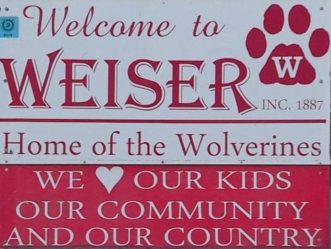Scan 4
The girls had to plan the meals, buy the vegetables from a Chinese gardener’s wagon, bake all the bread, pies, cakes, and it took a lot of time from our studying.
“Once in a while when some plan went wrong and we found ourselves short of dessert, we hurried out to a good neighbor who lived near, Mrs. Gilbert Tracy, who would sell us canned fruit from her cellar. His extra work of housekeeping took much of our valuable study time, and often we had a book propped up where we could see its pages as we passed by, open to a Latin declension, or such.
Accidents sometimes happened. Once I put the measured coffee in. the tea kettle instead of the coffee pot. But on the whole things went well, considering what a large family we had, besides Mrs. Tracy, I Recall especially Mrs. Herman Haas, who lived just across the street from the hotel. She did so much for us, was so interested in the school, helping with the entertainments and music, and was indeed a big sister to us all.”
The Founders and Friends of Weiser Academy had every reason to be encouraged and gratified with the progress the institution had made and the bright prospects for the future.
The academy had three terms in the second year. To keep up with its rapid growth, the corps of teachers has been doubled making it four professors.
During the winter term, there were classes in Latin, Greek, English literature, English grammar, history, geography, bookkeeping, orthography and penmanship as well as music.
All regular students, with the approval of the faculty, could receive piano lessons twice per week, free of charge.
Classes, sleeping and study rooms for about 20 young ladies at an expense of only $2.50 per week for room, board, fuel and light. A portion of this charge may be paid by doing housework, and some of the young men found table board at the academy dining room for $2.00 per week. Rooms could be procured in private houses at reasonable rates. Tuition was $10.00 per term of 12 weeks, $1.00 per week for those entering late.
“When the academy girls wanted to go shopping, they had to walk one mile to New Town on a sidewalk full of holes. One more stubbed toe or wrenched ankle and the academy girls vow they will get a hammer, saw and nails and go marching out in a body to repair the board sidewalks between East and West Weiser, the walk is full of…






